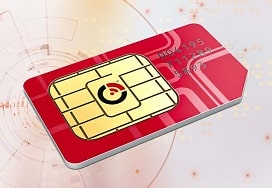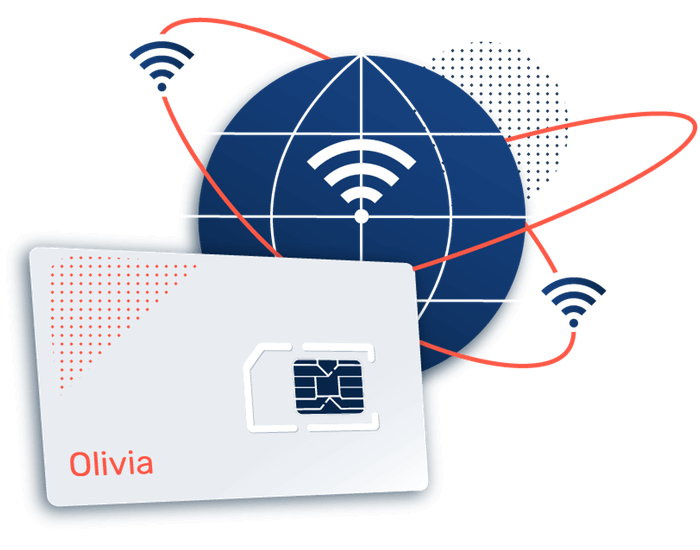Long Range IoT Connectivity Market Reports on IoT Connectivity
Industrial IoT Connectivity Quick Overview of IoT Connectivity Types

The world has witnessed a major transformation in the way we work together with our dwelling spaces. Smart properties, geared up with related units, have risen dramatically in popularity, providing enhanced comfort, safety, and energy efficiency. However, achieving seamless integration of all these gadgets closely relies on efficient IoT connectivity options.
Various connectivity technologies facilitate communication between units, making certain that each part of the smart house works harmoniously. Choosing one of the best IoT connectivity solutions for smart properties is crucial for creating an efficient and responsive environment. These options differ in terms of range, power consumption, and the forms of units they support, permitting consumers to tailor their smart residence ecosystems to their particular needs.
Wi-Fi is considered one of the most widely used connectivity options, primarily as a end result of its ubiquitous nature and high information transfer charges. Many smart house devices are already designed to connect effortlessly to current Wi-Fi networks. This makes adding new gadgets relatively easy. Tablets, smartphones, and routers can often assist a number of gadgets simultaneously, making it a handy choice for smart residence lovers.
IoT Connectivity Definition Connection Types and IoT Devices Overview
However, Wi-Fi isn't without its challenges. The dependence on a steady internet connection can sometimes result in performance issues, particularly with multiple devices making an attempt to communicate without delay. Furthermore, the range could be limited relying on the layout of the home. Walls and different barriers may cause sign degradation, which might hinder the performance of units positioned removed from the router.

Zigbee is one other compelling choice for IoT connectivity in smart houses. This technology helps low-power gadgets, making it appropriate for battery-operated sensors and gadgets. Zigbee creates a mesh network, which implies every related device acts as a relay, increasing the vary of connectivity within the residence. This is especially useful in larger areas the place traditional Wi-Fi may struggle.
IoT Connectivity Service Providers Common IoT Connectivity Technologies and Use Cases
Z-Wave adds to the suite of choices available for smart properties. It operates on a lower frequency than Wi-Fi, which implies it can better penetrate partitions and avoid interference from different electronic units. Z-Wave is engineered specifically for house automation, allowing numerous devices to work together seamlessly. The low power consumption additionally aids in battery longevity for gadgets that operate on this community.
For applications requiring low information rates however high reliability, LoRa (Long Range) offers a wonderful various. It is very useful for agricultural or environmental monitoring units that solely require intermittent knowledge transmission. LoRaWAN (Low Power Wide Area Network) permits these devices to speak over lengthy distances, making it an ideal answer for expansive properties or smart city purposes.
Cellular connectivity serves as one other robust solution, primarily for gadgets that require constant web entry but may not be put in near established networks. This ensures that units can ship and obtain data over the web instantly, eliminating reliance on home Wi-Fi methods. While maybe dearer, cellular connectivity offers the benefit of wide-reaching availability, notably in rural or hard-to-reach areas.
Bluetooth can also be a major player within the realm of smart residence connectivity, particularly for personal units like health trackers, smartwatches, and audio system. Its low power requirements make it a beautiful possibility for short-range communication. Bluetooth mesh networking enhances the protocol’s capability, enabling devices to communicate successfully even when separated by some distance.
IoT Connectivity Types Understanding the Internet of Things
Thread is a relatively newer protocol designed to make system connectivity easier. It also supports low-power devices in a mesh network configuration. What sets Thread apart is its IPv6-based communication, which enables more straightforward integration with internet-based systems and services. This adaptability opens the door for future scalability as smart home technologies proceed to evolve. IoT Connectivity Control.
The integration of various connectivity protocols is important for compatibility among gadgets. Many corporations have recognized that a single resolution won't meet all person wants, leading to multi-protocol methods that can seamlessly swap between networks. Such flexibility enables owners to customize their smart environments and connect gadgets regardless of the producer.

As customers more and more emphasize sustainability, visit this website smart homes that facilitate energy-efficient living have gained traction. IoT connectivity solutions contribute significantly to this trend. Devices can communicate to optimize energy usage, adjusting heating, cooling, and lighting based mostly on real-time knowledge.
When choosing the right IoT connectivity options for smart houses, shoppers ought to rigorously think about their specific necessities. Those prioritizing velocity may lean in course of Wi-Fi, whereas individuals needing to extend the range of connectivity might prefer Zigbee or Z-Wave. Budget, device compatibility, and the potential for future upgrades also play a significant role in decision-making.
IoT Connectivity Policy Infrastructure and Connectivity for IoT Devices
Ultimately, the most effective IoT connectivity options for smart homes will enhance not solely automated comfort but in addition the total living expertise by incorporating advanced technology into day by day routines. These options empower householders to manage their environments higher and stay more sustainably, concurrently having fun with the benefits of state-of-the-art connectivity.
In conclusion, with the rapid developments in know-how, the landscape of smart residence connectivity continues to evolve. As more gadgets enter the market and extra householders embrace automation, the significance of strong connectivity solutions turns into more and more apparent. Those who make investments time in understanding and implementing these solutions will undoubtedly contribute to creating more clever, efficient, and gratifying dwelling spaces.
- Various connectivity protocols like Zigbee, Z-Wave, and Wi-Fi cater to completely different smart house devices, enhancing interoperability and gadget communication.
- Mesh networking capabilities enable gadgets to communicate extra effectively, expanding protection and reducing lifeless zones within bigger homes.
- Low-power wide-area networks (LPWAN) present energy-efficient solutions for battery-operated devices, selling longer operational lifespans.
- The integration of edge computing ensures real-time data processing, lowering latency and enhancing overall system responsiveness.
- Cloud-based IoT platforms provide extensive knowledge analytics, enabling users to optimize system usage and energy savings of their smart homes.
- Security options, such as end-to-end encryption and common firmware updates, are important for shielding smart residence data from potential threats.
- Dual-band routers can help both 2.4 GHz and 5 GHz connections, providing flexibility and improved efficiency for diverse smart units.
- User-friendly cell purposes improve the management of smart home units, enabling seamless interactivity and scheduling functionalities.
- Interoperability standards, corresponding to Matter, facilitate collaboration between totally different producers, promoting seamless cross-device communication.
- 5G technology guarantees ultra-low latency and better bandwidth, potentially revolutionizing smart house experiences with sooner data transfer charges.
What are the various sorts of IoT connectivity options for smart homes?undefinedThere are several IoT connectivity solutions, including Wi-Fi, Zigbee, Z-Wave, Cellular, and LoRa. Each provides completely different benefits when it comes to vary, pace, power consumption, and scalability, allowing for tailored options primarily based on particular smart home needs.
How does Wi-Fi examine to Zigbee for smart house devices?undefinedWi-Fi is quicker and broadly used for high-bandwidth applications, while Zigbee is designed for low-power, low-bandwidth tasks, making it best for units that require lengthy battery life. Zigbee additionally helps mesh networking, enhancing vary and connectivity among devices.
Managed IoT Connectivity Services Evaluating IoT Connectivity Technology Pros and Cons
What elements should I consider when choosing an IoT connectivity solution?undefinedConsider factors like vary, energy consumption, gadget compatibility, safety features, and the particular needs of your smart residence ecosystem. Assess what quantity of units you click to find out more intend to attach and their energy necessities, making certain the chosen answer supports your setup.

Are there safety risks related to IoT connectivity options for smart homes?undefinedYes, security dangers include unauthorized entry and data breaches. It’s essential to choose options with sturdy encryption and regular updates. Implementing sturdy passwords, firewalls, and keeping firmware updated can considerably enhance your smart home’s safety - IoT Connectivity Management Platform.
IoT Connectivity Security Overview of Cellular IoT Connectivity
Can I combine multiple IoT connectivity options in my smart home?undefinedAbsolutely! Many smart house methods help integration across various protocols, permitting gadgets utilizing totally different connectivity solutions to work together seamlessly. This flexibility enables customers to optimize efficiency and compatibility.
What position does the cloud play in IoT connectivity for smart homes?undefinedThe cloud allows remote management, information storage, and superior analytics for smart house devices. It facilitates communication between gadgets and person interfaces, permitting for real-time monitoring and control from anywhere through web connections.
IoT Connectivity Market Best Practices for IoT Network Design
How can I guarantee compatibility among completely different smart house devices?undefinedCheck for compatibility labels and be certain that units observe widespread standards like Zigbee or Z-Wave. Research ecosystems, such as Google Home or Amazon Alexa, that assist a extensive range of units, simplifying integration and management.
What is the future of IoT connectivity options for smart homes?undefinedThe future is leaning in the direction of enhanced interoperability, improved security protocols, and the rise of 5G expertise. These advancements will provide quicker speeds, larger system density, and decrease latency, enhancing the overall smart residence experience.
How can I troubleshoot connectivity points in my smart home?undefinedStart by checking the power sources and guaranteeing devices are inside vary of their connectivity hub. Restart routers and units as wanted. Use either app diagnostics or producer support assets for particular troubleshooting steps tailored to the gadgets in question.